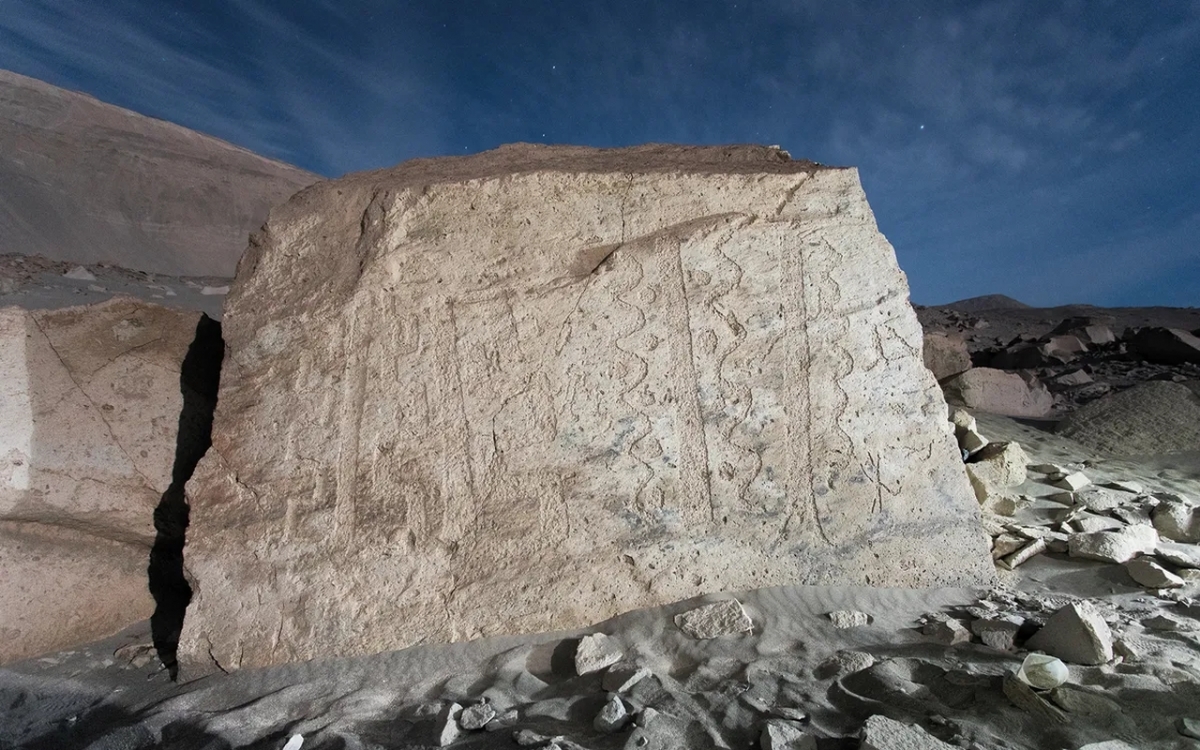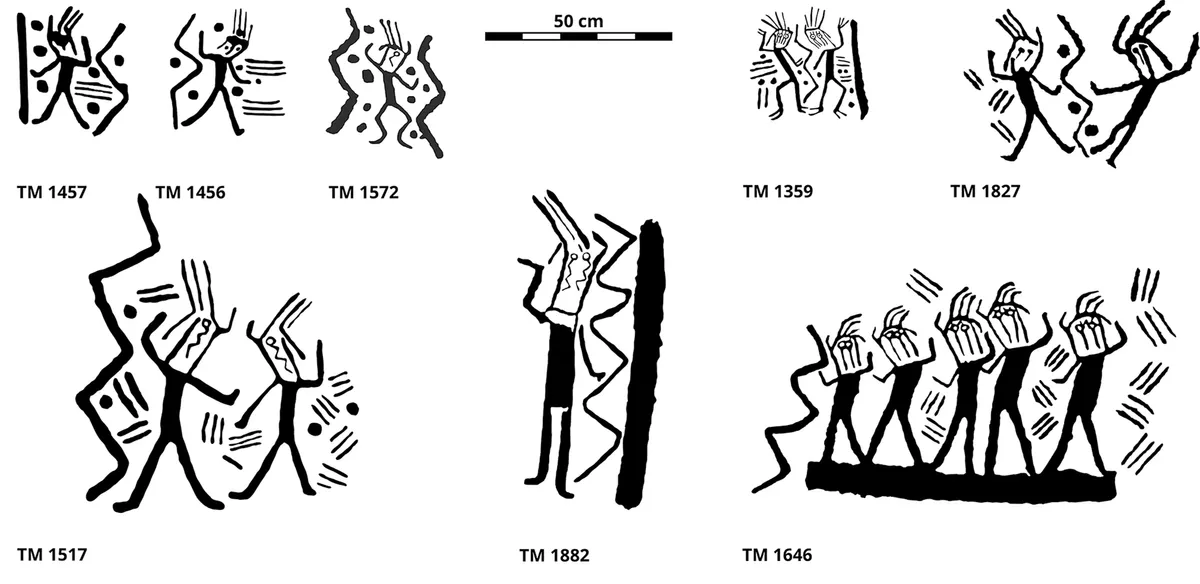Psychedelic music notes found in 2,000-year-old rock

Shamanic songs of the ancient past may be engraved on this stone.
A series of ancient engravings found on volcanic rocks in southern Peru may represent music performed during shamanic rituals using hallucinogenic plants 2,000 years ago. The enigmatic art, consisting of dancing human figures surrounded by zigzagging lines and other geometric forms, eschews a concrete interpretation, but a new analysis suggests that these abstract shapes may depict songs that transport participants to other dimensions during their psychedelic journeys.
Pre-Columbian designs can be found at Toro Muerto, which houses one of the richest collections of rock art in South America. This site, a desert gorge, is filled with thousands of rocks, about 2,600 of which contain ancient engravings.
Describing the drawings in a new study, the researchers explain that the artworks contain "an almost overwhelming repetition of dancing human figures (known as danzantes), unique in the region, and an extraordinary accumulation of geometric patterns, mostly in the form of vertical zigzags, straight and curved lines of varying width, sometimes with accompanying dots or circles." While previous attempts to interpret these zigzags have suggested they could represent snakes, lightning or water, the study authors believe they may have an alternative meaning.
To form their hypothesis, the researchers point to striking similarities between the drawings at Toro Muerto and the traditional artwork of the Tukano culture in the Colombian Amazon. In the Tukano culture, geometric designs are associated with visions induced by the hallucinogenic ayahuasca plant, which has been ritually smoked by Amazonian natives for thousands of years. 
Anthropological analyses of these rituals have repeatedly emphasized the importance of music; songs known as icaros are sung by shamans as a means of communicating with the gods and traveling through the spiritual cosmos. Interestingly, studies of the significance of the zigzags in Tukano artworks have revealed that "the Tukanos saw in these zigzags representations of songs that were an integral part of the ritual, which also had mediating power and constituted a means of passage into the mythical time of the beginning."
In other words, in the Tukano context, these shapes depict shamanic music that mesmerizes ritual participants under the influence of ayahuasca and transports them to a "parallel world" where they can reconnect with ancestral mythology. Applying the same interpretation to the artworks at Toro Muerto, the authors of the study suggest that "the central danzantine, surrounded by wavy lines, is actually 'surrounded' by songs, which - by embodying energy and power simultaneously - are the source of the passage to another world."
Acknowledging that their theory is somewhat speculative, the researchers nevertheless conclude that these pre-Hispanic drawings "depict a cultural field that is difficult to understand graphically, that of song and singing."
Exploring the deeper meaning behind these musical depictions, the authors explain that "the cosmos is the space that the shaman explores on his visionary journey, while the wavy and zigzag lines may be visualizations of both the songs that lead him to this parallel reality and the feeling of being in that other world."
Thanks for reading.









































